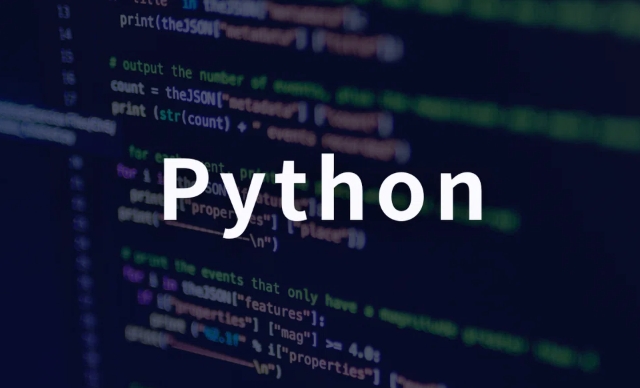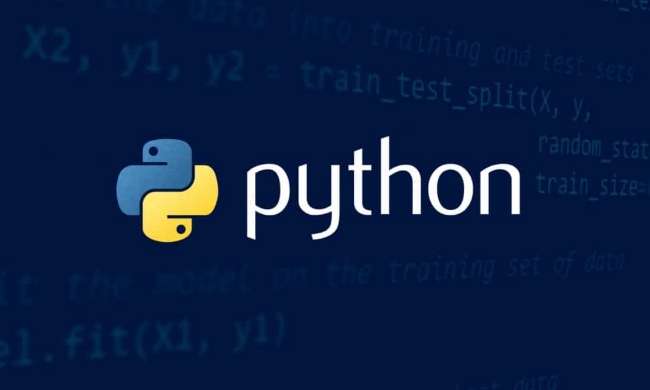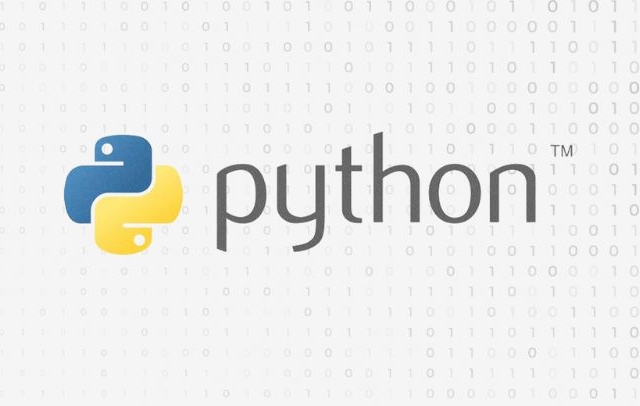What are python built-in functions?
Python's built-in functions are functions that can be used directly without importing modules. They are divided into three categories: type conversion, mathematical operations, and object operations. ① Type conversion functions include int() to convert strings or floating-point numbers into integers, str() to strings, list() and tuple() to iterable objects, float() to floating-point types, but illegal conversions will cause errors to be reported and exceptions need to be handled; ② Mathematical and comparison functions include abs() to take absolute values, round() rounding, min()/max() to find the minimum maximum value, sum() to sum elements, which is suitable for data analysis and algorithm writing; ③ Object and structure operation functions such as len() to obtain length, type() and isinstance() to judge types, id() to view memory addresses, dir() to list attribute methods, input() to receive input, and print() to output content, suitable for debugging and interactive programming. Familiar with these commonly used functions can significantly improve code efficiency.

Python's built-in functions are those that can be used directly without additional import modules. They are part of the Python language and cover multiple aspects, from data type conversion, mathematical operations to object operations.

Common type conversion functions
These functions are very useful when dealing with different types of data, such as converting strings into integers, or turning lists into tuples.
-
int(): converts a string or floating point number into an integer, for exampleint("123")returns123 -
str(): convert other types into strings, such asstr(456)to get"456" -
list()andtuple(): It can convert iterable objects (such as strings, collections) into lists or tuples -
float(): converts a numeric string or integer into a floating point type
It should be noted that if the converted content is illegal, such as using int("abc") , the program will report an error, so it is best to cooperate with exception handling in actual use.

Commonly used math and comparison functions
Although many math functions are placed in the math module, there are also some practical gadgets built-in:
-
abs(): Returns the absolute value of a number, such asabs(-5)to get5 -
round():round(3.6)is4andround(3.4)is3 -
min()andmax(): Find the minimum or maximum value in a set of data, supports multiple parameters and even iterable objects -
sum(): Sum of elements in an iterable object, often used for a set of numbers in a list or tuple
These functions often appear in data analysis and algorithm writing, and are simple but very practical.

Operation functions on objects and structures
Some built-in functions can help us view object properties, judge types, or perform logical control.
-
len(): Get the object length, suitable for strings, lists, dictionaries, etc. -
type()andisinstance(): used to judge variable types, the latter is more suitable for inheritance relationship judgment -
id(): View the unique identifier of the object (memory address) -
dir(): Lists all available properties and methods of the object, which is useful during debugging. -
input(): Receive user input, suitable for interactive scripts -
print(): output content, the first function to be exposed to by almost every beginner
For example, if you write a mini program and want the user to enter a name, you can do this:
name = input("Please enter your name:")
print("Hello,", name) Basically that's it. Python has many built-in functions, but only dozens of commonly used ones can be used. After getting familiar with them, you can greatly improve code efficiency. Some details may be easily overlooked, such as how to deal with round() in .5, or the difference between isinstance() and type() , but you will know these problems by looking at the documentation or trying them.
The above is the detailed content of What are python built-in functions?. For more information, please follow other related articles on the PHP Chinese website!

Hot AI Tools

Undress AI Tool
Undress images for free

Undresser.AI Undress
AI-powered app for creating realistic nude photos

AI Clothes Remover
Online AI tool for removing clothes from photos.

ArtGPT
AI image generator for creative art from text prompts.

Stock Market GPT
AI powered investment research for smarter decisions

Hot Article

Hot Tools

Notepad++7.3.1
Easy-to-use and free code editor

SublimeText3 Chinese version
Chinese version, very easy to use

Zend Studio 13.0.1
Powerful PHP integrated development environment

Dreamweaver CS6
Visual web development tools

SublimeText3 Mac version
God-level code editing software (SublimeText3)
 How to install packages from a requirements.txt file in Python
Sep 18, 2025 am 04:24 AM
How to install packages from a requirements.txt file in Python
Sep 18, 2025 am 04:24 AM
Run pipinstall-rrequirements.txt to install the dependency package. It is recommended to create and activate the virtual environment first to avoid conflicts, ensure that the file path is correct and that the pip has been updated, and use options such as --no-deps or --user to adjust the installation behavior if necessary.
 Efficient merge strategy of PEFT LoRA adapter and base model
Sep 19, 2025 pm 05:12 PM
Efficient merge strategy of PEFT LoRA adapter and base model
Sep 19, 2025 pm 05:12 PM
This tutorial details how to efficiently merge the PEFT LoRA adapter with the base model to generate a completely independent model. The article points out that it is wrong to directly use transformers.AutoModel to load the adapter and manually merge the weights, and provides the correct process to use the merge_and_unload method in the peft library. In addition, the tutorial also emphasizes the importance of dealing with word segmenters and discusses PEFT version compatibility issues and solutions.
 How to test Python code with pytest
Sep 20, 2025 am 12:35 AM
How to test Python code with pytest
Sep 20, 2025 am 12:35 AM
Python is a simple and powerful testing tool in Python. After installation, test files are automatically discovered according to naming rules. Write a function starting with test_ for assertion testing, use @pytest.fixture to create reusable test data, verify exceptions through pytest.raises, supports running specified tests and multiple command line options, and improves testing efficiency.
 How to handle command line arguments in Python
Sep 21, 2025 am 03:49 AM
How to handle command line arguments in Python
Sep 21, 2025 am 03:49 AM
Theargparsemoduleistherecommendedwaytohandlecommand-lineargumentsinPython,providingrobustparsing,typevalidation,helpmessages,anderrorhandling;usesys.argvforsimplecasesrequiringminimalsetup.
 Floating point number accuracy problem in Python and its high-precision calculation scheme
Sep 19, 2025 pm 05:57 PM
Floating point number accuracy problem in Python and its high-precision calculation scheme
Sep 19, 2025 pm 05:57 PM
This article aims to explore the common problem of insufficient calculation accuracy of floating point numbers in Python and NumPy, and explains that its root cause lies in the representation limitation of standard 64-bit floating point numbers. For computing scenarios that require higher accuracy, the article will introduce and compare the usage methods, features and applicable scenarios of high-precision mathematical libraries such as mpmath, SymPy and gmpy to help readers choose the right tools to solve complex accuracy needs.
 How to work with PDF files in Python
Sep 20, 2025 am 04:44 AM
How to work with PDF files in Python
Sep 20, 2025 am 04:44 AM
PyPDF2, pdfplumber and FPDF are the core libraries for Python to process PDF. Use PyPDF2 to perform text extraction, merging, splitting and encryption, such as reading the page through PdfReader and calling extract_text() to get content; pdfplumber is more suitable for retaining layout text extraction and table recognition, and supports extract_tables() to accurately capture table data; FPDF (recommended fpdf2) is used to generate PDF, and documents are built and output through add_page(), set_font() and cell(). When merging PDFs, PdfWriter's append() method can integrate multiple files
 How can you create a context manager using the @contextmanager decorator in Python?
Sep 20, 2025 am 04:50 AM
How can you create a context manager using the @contextmanager decorator in Python?
Sep 20, 2025 am 04:50 AM
Import@contextmanagerfromcontextlibanddefineageneratorfunctionthatyieldsexactlyonce,wherecodebeforeyieldactsasenterandcodeafteryield(preferablyinfinally)actsas__exit__.2.Usethefunctioninawithstatement,wheretheyieldedvalueisaccessibleviaas,andthesetup
 python get current time example
Sep 15, 2025 am 02:32 AM
python get current time example
Sep 15, 2025 am 02:32 AM
Getting the current time can be implemented in Python through the datetime module. 1. Use datetime.now() to obtain the local current time, 2. Use strftime("%Y-%m-%d%H:%M:%S") to format the output year, month, day, hour, minute and second, 3. Use datetime.now().time() to obtain only the time part, 4. It is recommended to use datetime.now(timezone.utc) to obtain UTC time, avoid using deprecated utcnow(), and daily operations can meet the needs by combining datetime.now() with formatted strings.







